I watched the sweat flying off the brow of the petite figure in front of us. The crowd cheered as a grey-haired man stood up to join her. He would have been at least 80 years old. He kicked up dust as he stamped his feet on the floor boards of the tablao, the sound muffled under the corrugated iron roof.
We were in Seville, the flamenco capital of Spain. So far, all we had seen was the inside of a laundromat. Sure, it was a nice laundromat. But with clean clothes and hungry mouths, we were eager for a taste of tapas, flamenco and the authentic Andalucia.
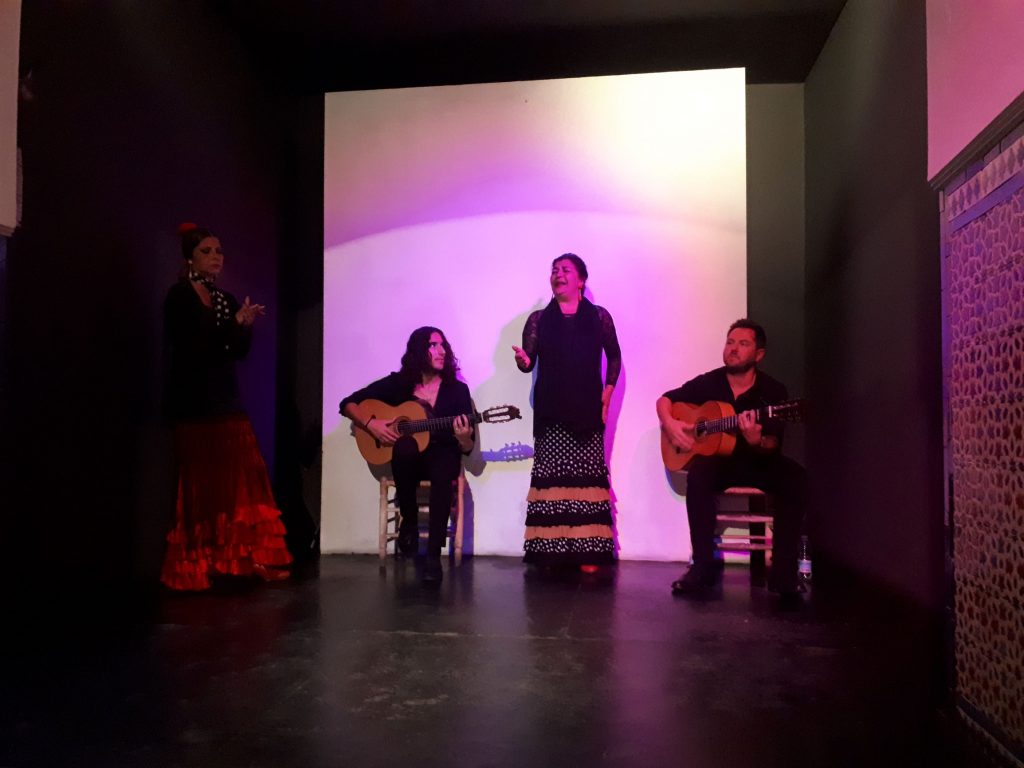
This show we stumbled on by accident included a flamenco lesson afterwards! Credit: Sophie Cullen
Andalucia – the southernmost region of Spain – is the perfect destination for teenage families. Late nights and late mornings sync nicely with adolescent body clocks, and free-flowing sangria is sure to suit the grown-ups. Read more about my experience of southern Spain – my favourite destination in Europe.
Seville
If southern Spain is my favourite European region, then Seville is definitely my favourite city. Families could easily spend a week exploring everything it has to offer.
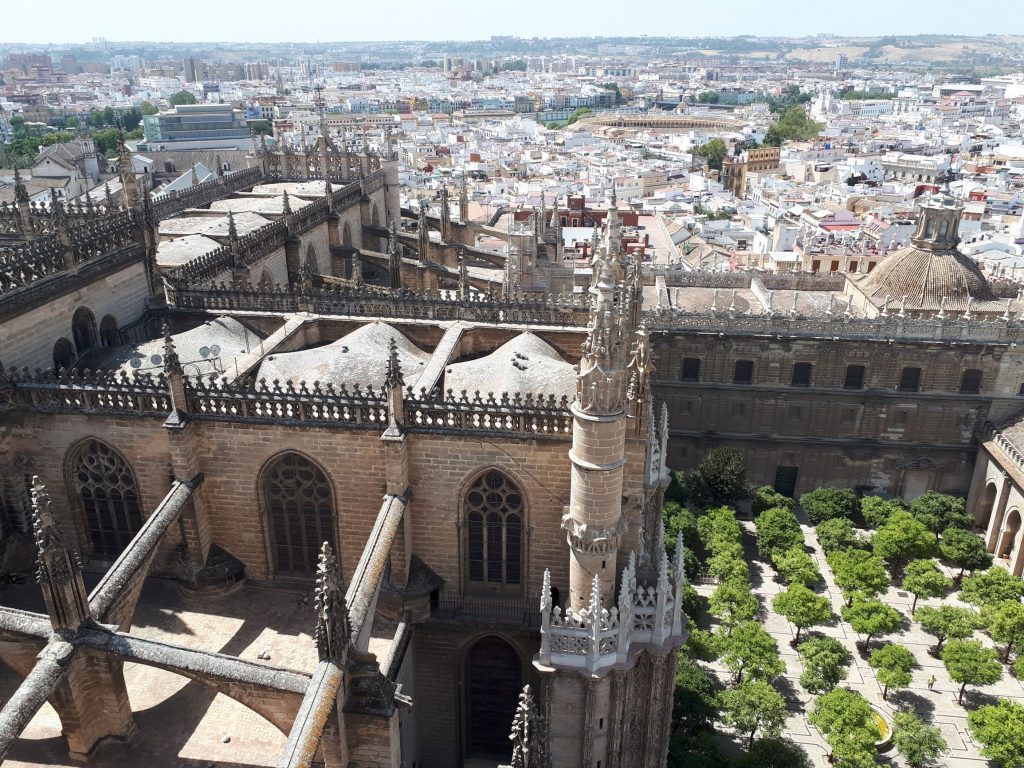
The astonishing view from the tower of Seville Cathedral Credit: Sophie Cullen
The awe-inspiring cathedral is the largest Gothic cathedral in the world. It puts up a worthy fight against La Sagrada Familia with its stained glass, and Barcelona’s Cathedral with its thirteen geese. I wandered around its cavernous interior, awe-struck, until I heard the sound of clapping. Pulling my audio guide earphones out and following the crowd, I stumbled on what looked like a Royal Wedding. It was about to start in a chapel, just out of view, and the guests were arriving. “The son of the President of the Seville Football Club is getting married,” someone whispered to me eventually – which is pretty much equivalent to royalty in this part of the world! The lavish hats were very impressive, and all the onlookers cheered the beautiful bride when she arrived.
My hot tip for the cathedral is to climb up to the Bell Tower for an astonishing view. Expect to be deafened if you reach the top on the hour!
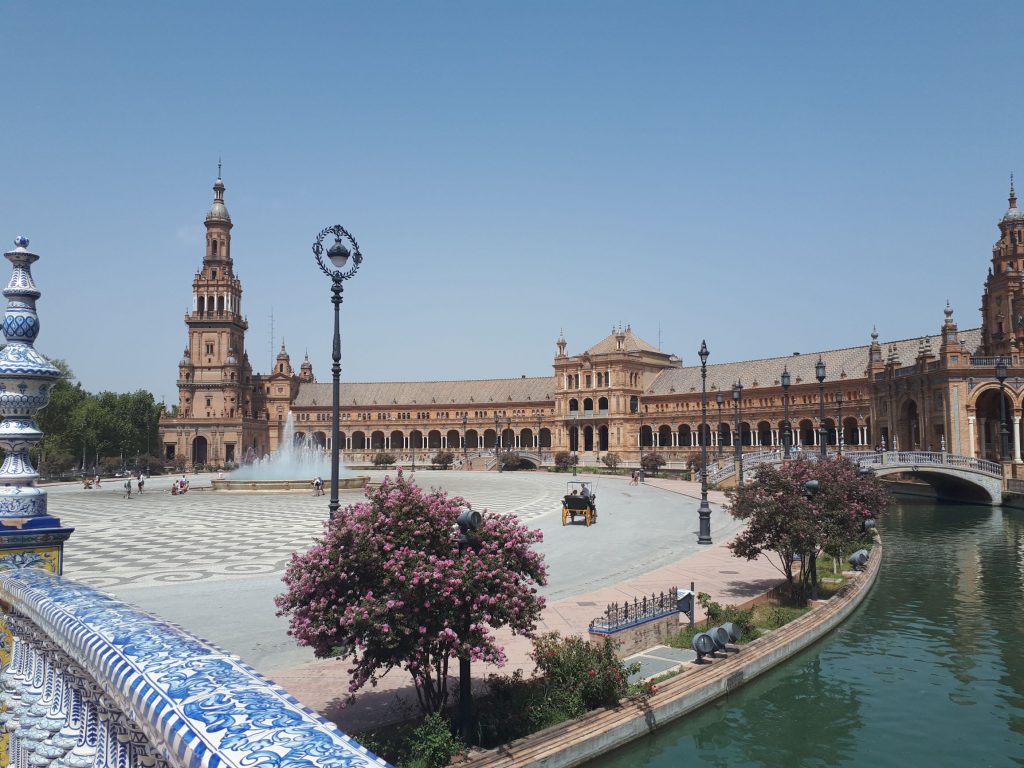
Recognise this from Star Wars? Stunning Plaza de Espana. Credit: Sophie Cullen
Teens will recognise the Plaza de Espana as Padme’s home city of Theed on the planet Naboo in Star Wars. I fell in love with the marble detailing, rowboats on the canal, ornate fountains… and the hat that I finally bought from a stall outside after a very glary Europe-wide search. The Alcazar also left a definitive impression, as did the dusty, empty bullfighting ring.
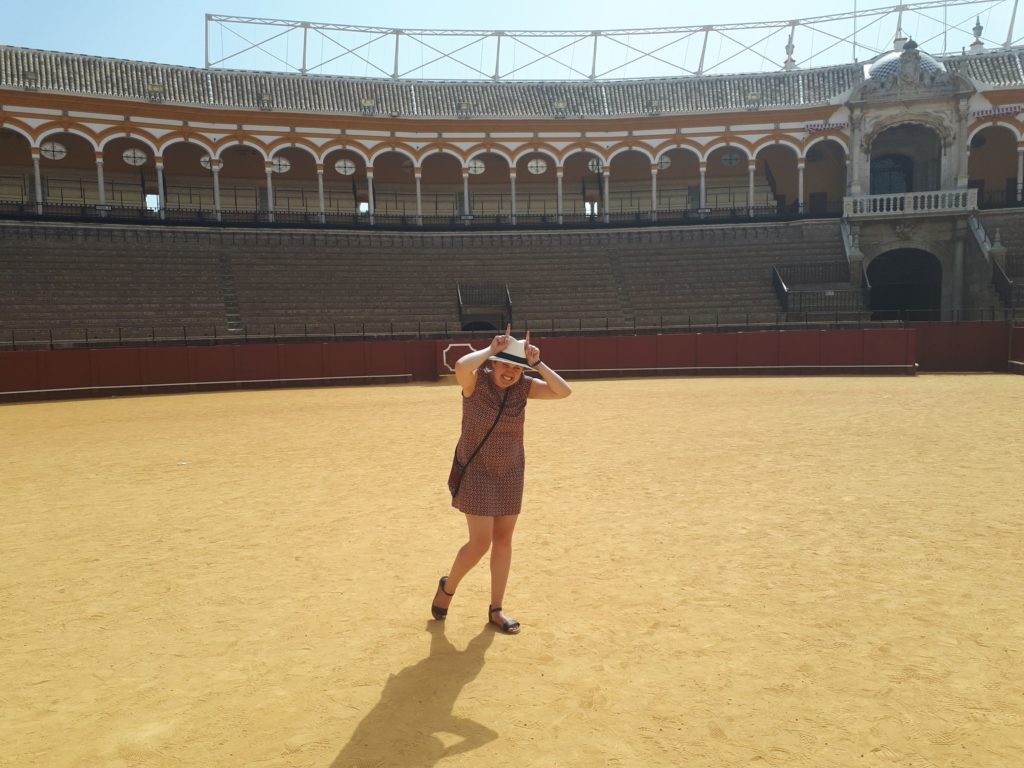
It wouldn’t be a bull ring without the bull! Credit: Sophie Cullen
Granada
I caught the flamenco bug in Seville and it followed me to Granada, where we sought out smaller shows offering cheaper tickets and the ‘real deal.’ We stayed for five nights, which was more than enough in hindsight. We should probably have added one or two extra nights to Seville instead.
It was drizzling with misty rain as we ascended to the famous Alhambra. The Alhambra is one of the top spots for tourists in Southern Spain and definitely the top spot for mosaics. Book tickets and time slots well in advance. Take time to explore the surrounding Generalife gardens. Who knows? You might be treated to an impromptu break-dancing show from a man wielding a selfie-stick, like we were!
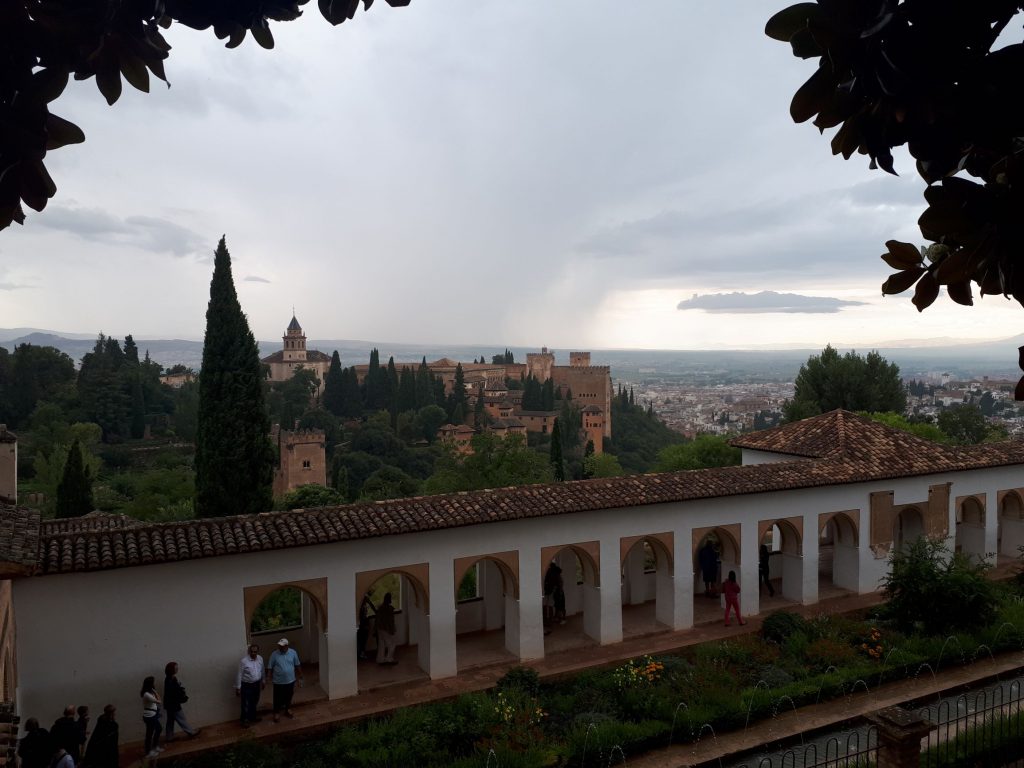
The sun desperately trying to break through clouds at Alhambra Credit: Sophie Cullen
My unexpected highlight was a late afternoon spent wandering around Albaizin and Sacromonte. You can enter stately houses with impressive gardens in these old neighbourhoods. Or walk further to the white-walled homes built into caves. We ate a paella on a balcony at dusk, with a view of the Alhambra illuminated on the hill opposite. As we headed back to our accommodation, we heard the stomping and wailing of a distant flamenco show echoing through the dark valley.
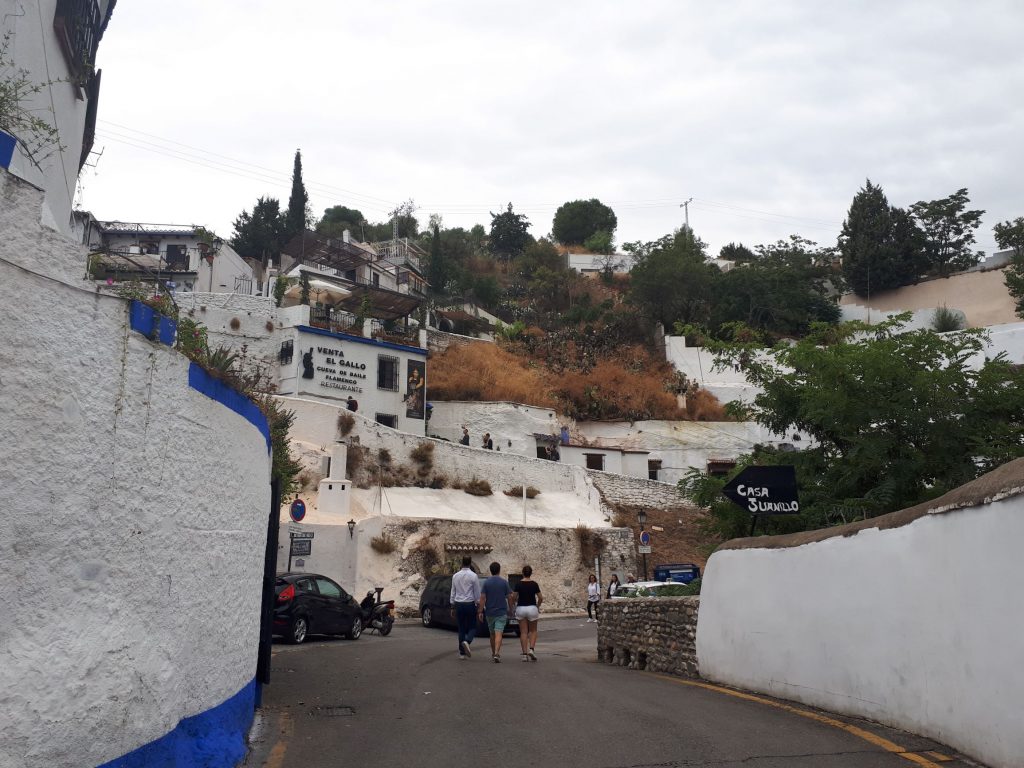
The white walls of Sacromonte are best enjoyed at sunset. Credit: Sophie Cullen
Cordoba
Riverside Cordoba is equally stunning but more relaxed than its famous city neighbours. Our route went from Seville to Cordoba before moving to Granada, and I was grateful for the break in the middle.
The Mezquita is the perfect symbol of the fusion of Islam and Christianity prevalent all over southern Spain. I recognised the red-and-white striped internal arches from photos, and spent an hour or so people-watching in the adjacent Patio de los Naranjos (orange-tree courtyard).
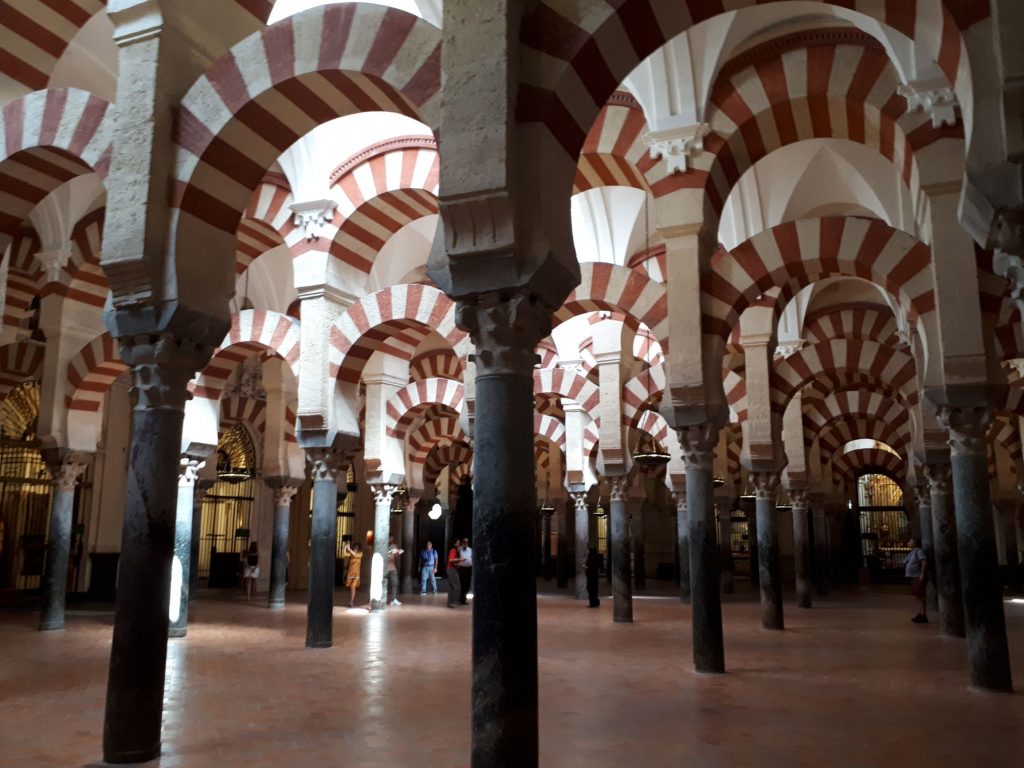
Believe it or not, in the middle of the mosque, you’ll find a cathedral! Credit: Sophie Cullen
I loved the Palacio de Viana and its twelve decadent courtyards – a great backdrop for some Insta snaps or a new profile pic. I also loved the Flamenco Museum, although it was quiet and low-key and not something I’d recommend to teens with low tolerance for museums or flamenco. After a tour through each room, I finally understood the regional differences of the music and dance. In general, Cordoba provides a nice opportunity to spent time in small, relaxed galleries and museums.
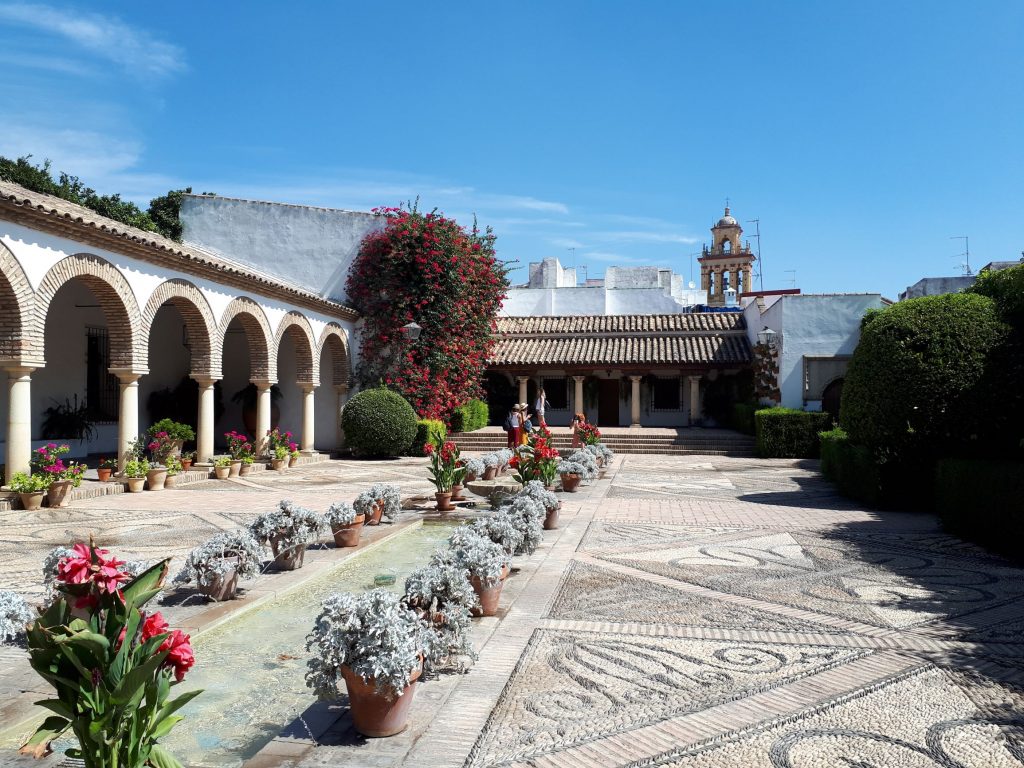
Just one of the twelve beautiful Palacio de Viana courtyards (I repeat, twelve!) Credit: Sophie Cullen
As usual, the best parts of our stay were the unexpected ones. After dinner one night we got stuck behind an enormous procession, complete with marching musicians. Another night, in search of the Roman bridge, I stumbled on a tiny secondhand bookshop. It sold postcards from the 1950s with faded, cursive messages written in Spanish. When I finally found the bridge, a trumpet duo was playing The Script’s Hall of Fame and waving at passers-by.
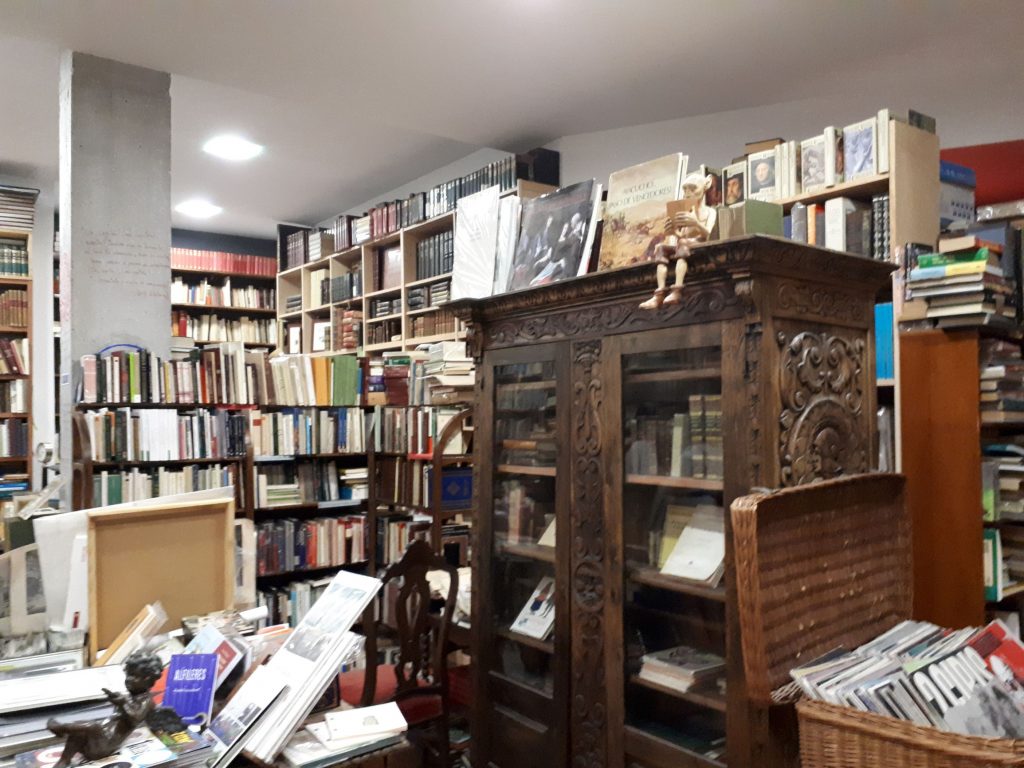
Bookshop after dark by the river in Cordoba Credit: Sophie Cullen
Malaga Province
I didn’t make it to Malaga, but really wish I’d taken the detour. It was the height of summer when we visited southern Spain, which means almost stifling heat. A stint at a coastal resort would have gone down a treat, as would the range of intriguing museums.
Photos of Ronda remind me of Rivendell from The Lord of the Rings, thanks to the sun-drenched stone bridge crossing the gorge. History buffs should venture out to the antique sites of Antequera, and arty types to the Picasso museum in Malaga itself.
Getting there
I’m a big advocate for Europe’s awesome rail system. It connects most cities. If you include airport waiting times, a train trip generally ends up a similar duration to a flight. I also love looking out the window at the countryside passing by. You can get high-speed services from Madrid to Seville.
Don’t shy away from buses either. I was impressed with buses we used in Spain (from Cordoba to Granada, for example), although we made sure to give ourselves plenty of buffer time.
Read more:
Europe’s top family-friendly cities
How to ace low-impact travel in Europe and beyond
This a Family Travel online exclusive story. Make sure you don’t miss any exclusive digital content by subscribing to our email newsletter.

